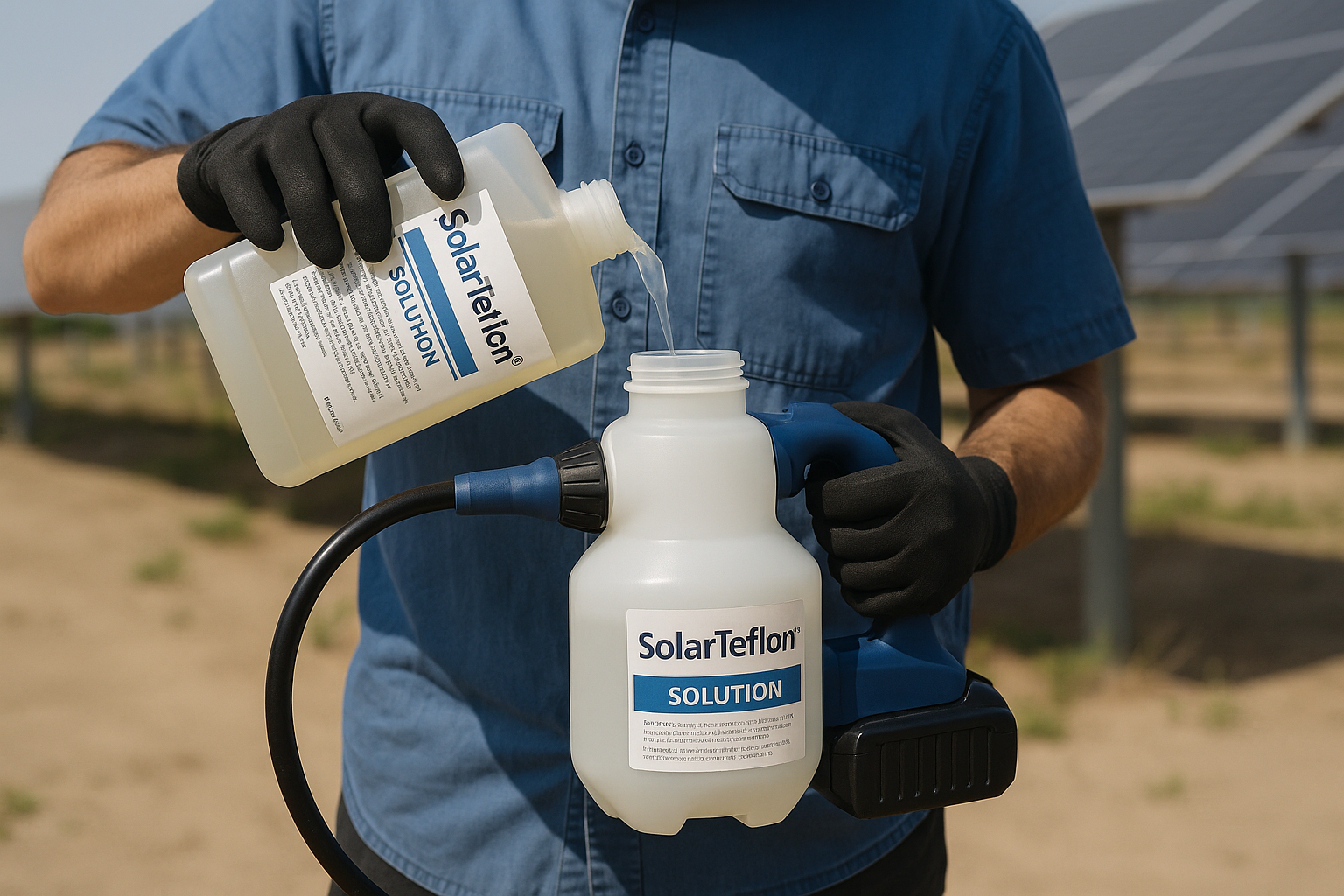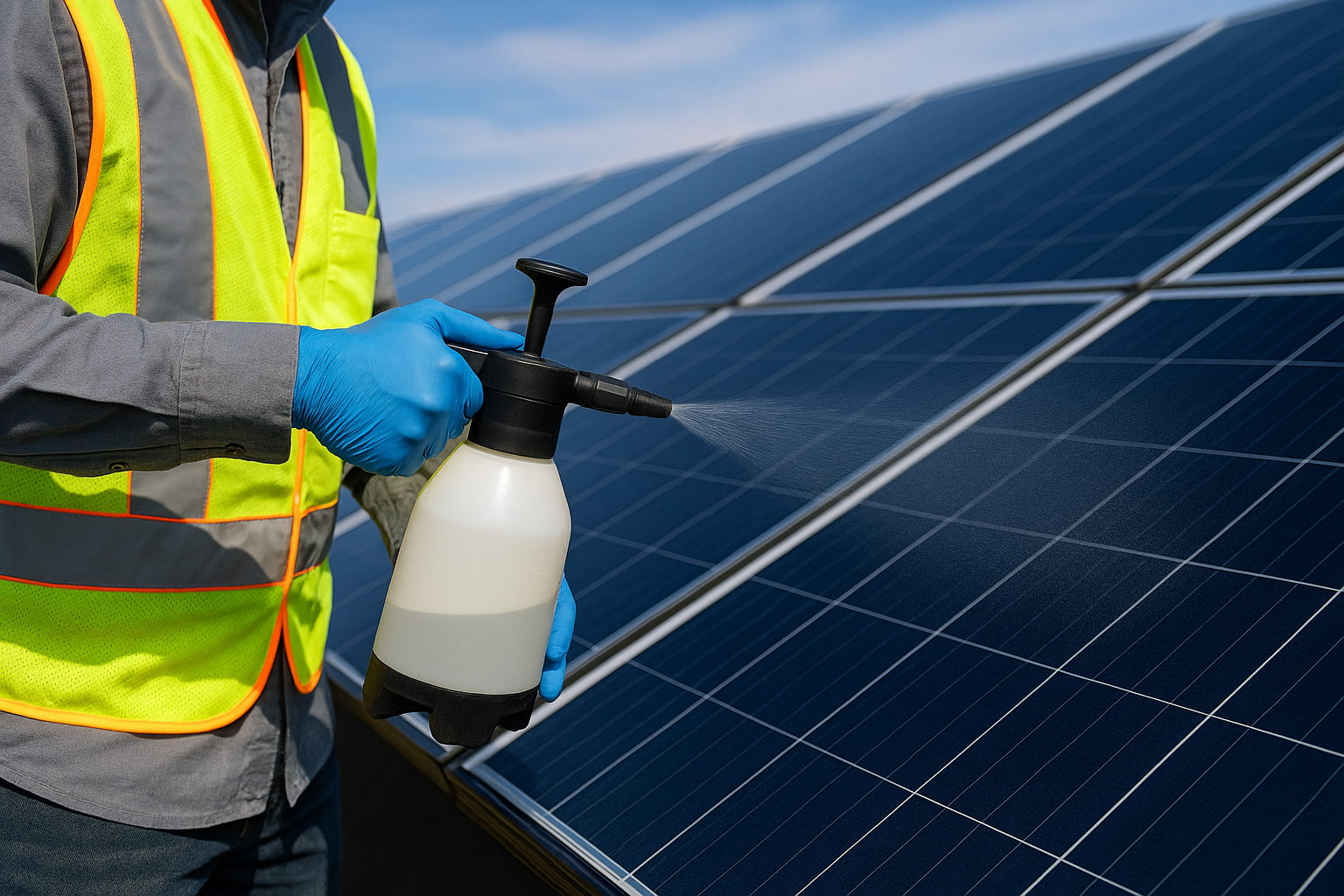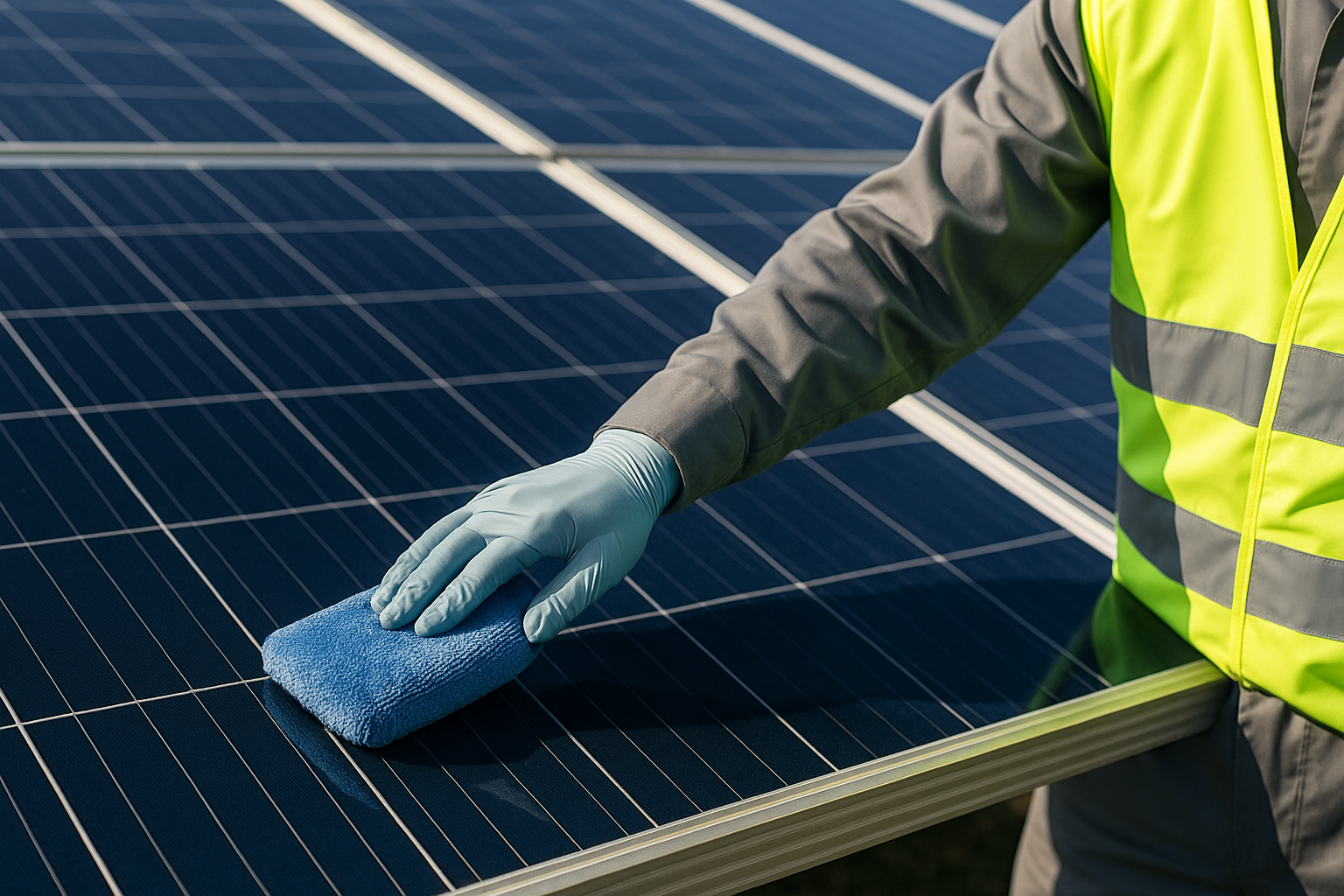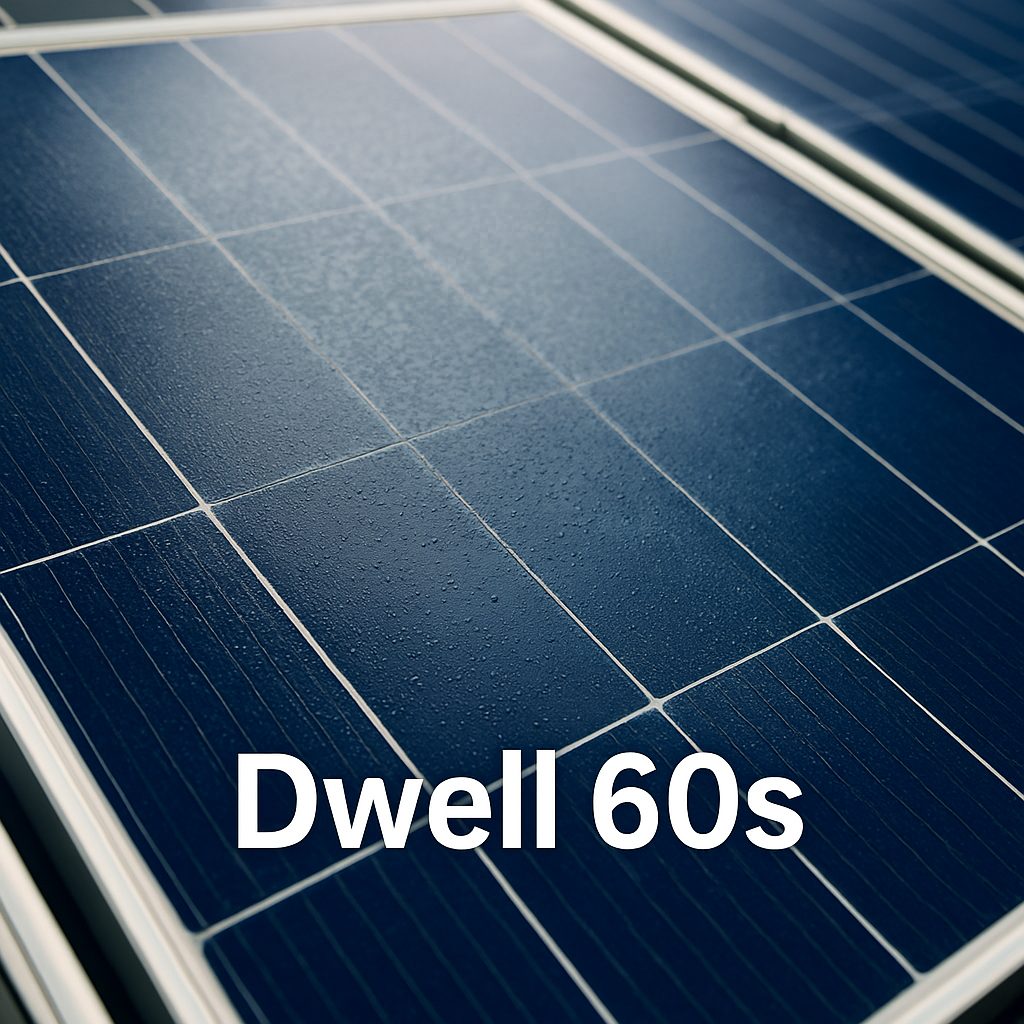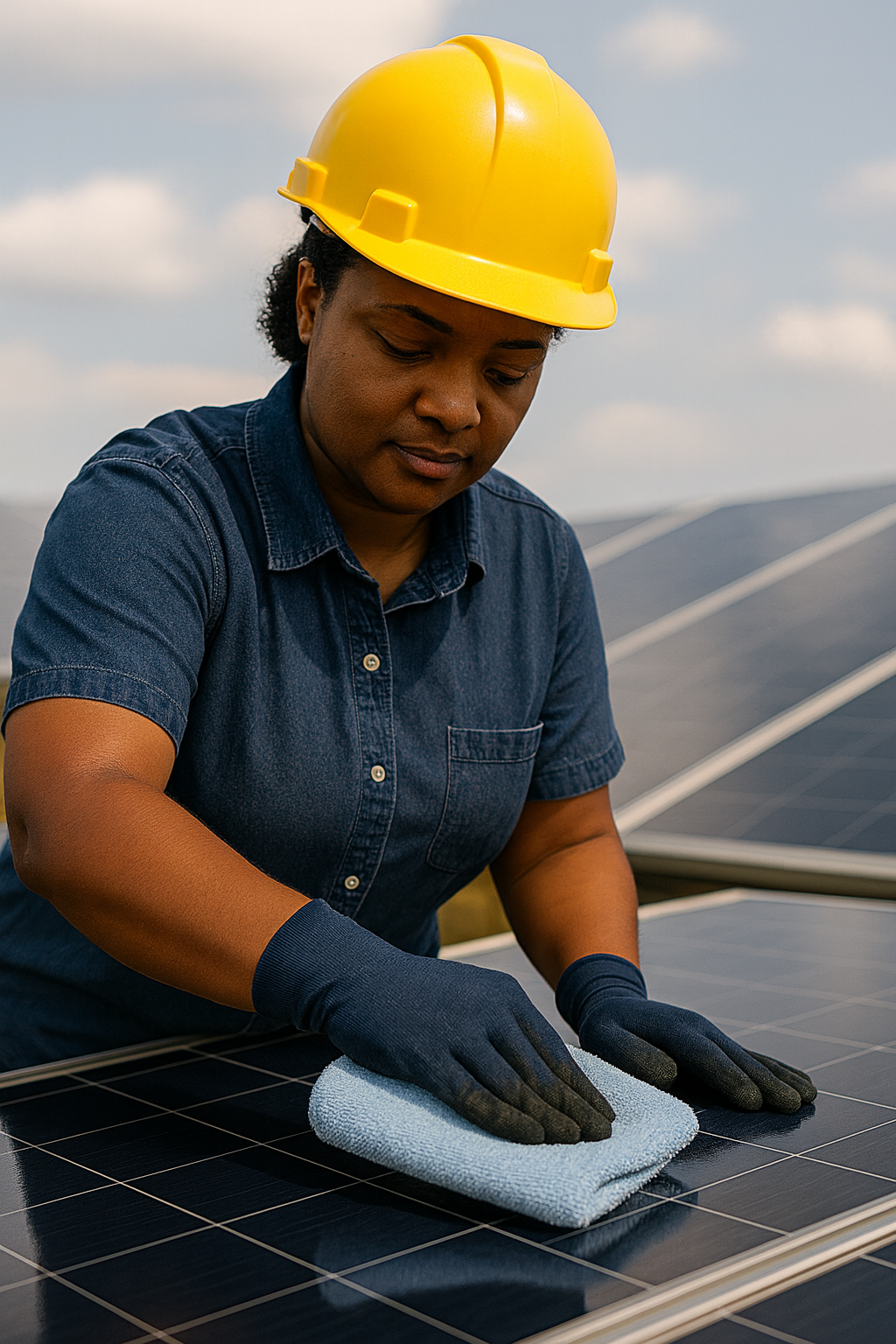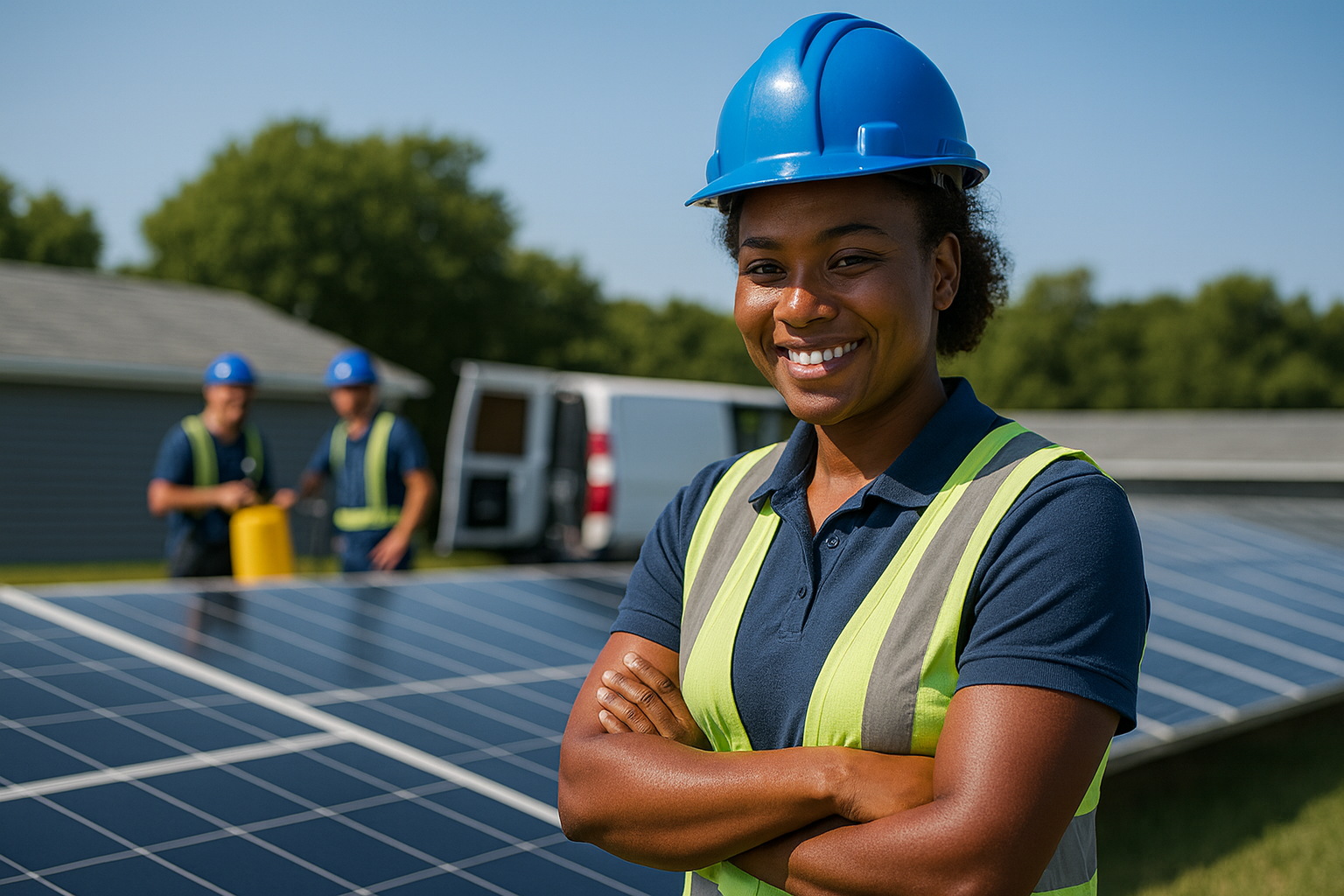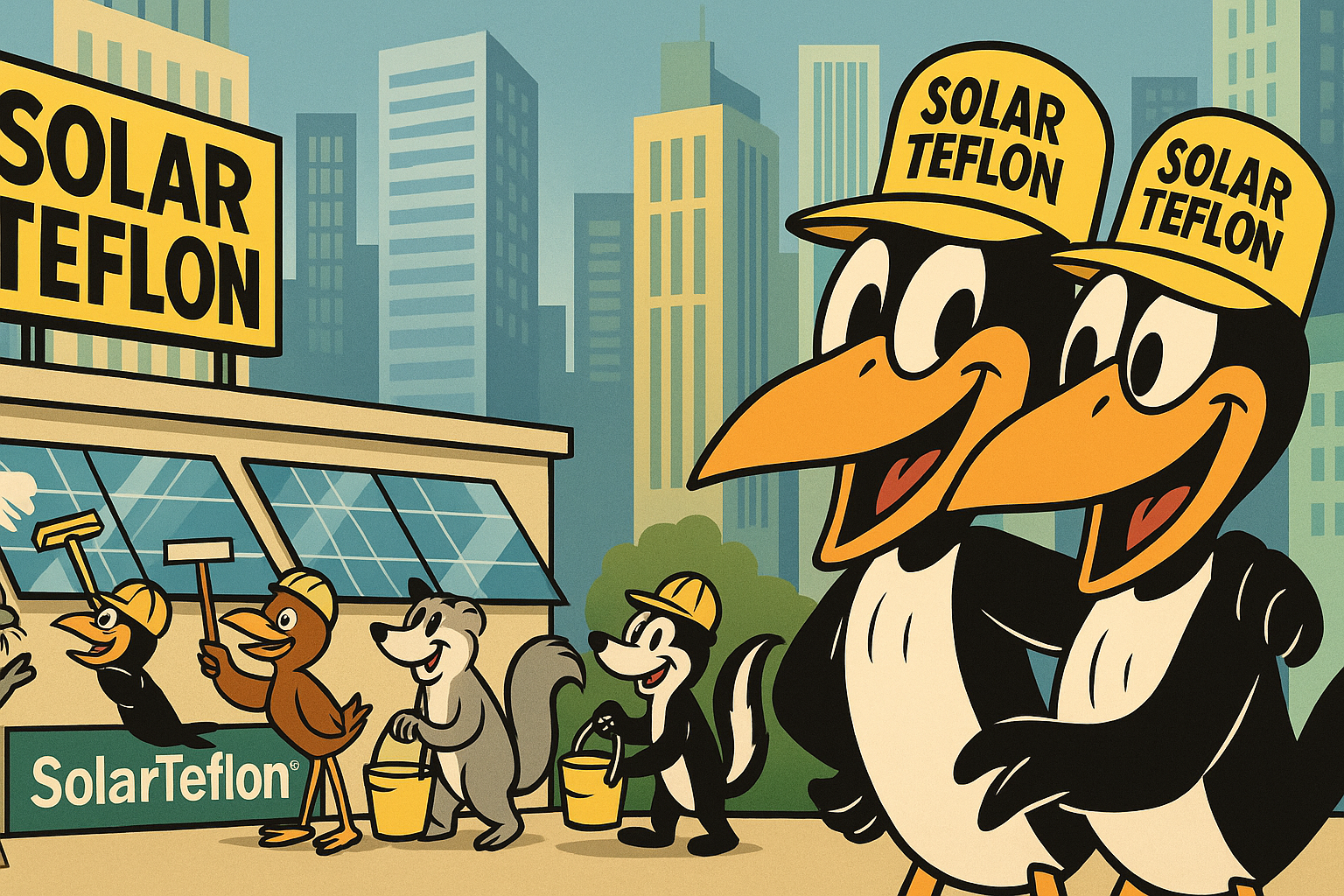
Fast, Clean, and Reliable Coating
SolarTeflon® delivers professional-grade protection in minutes. Follow these simple steps for a perfect finish that improves panel efficiency and durability.
1. LOAD
Fill the sprayer with SolarTeflon® solution.
2. MIST
Apply a fine, even mist to the panel surface.
3. SPREAD
Use applicator pad for smooth coverage.
4. REACT
Let it bond for 60 seconds to activate protection.
5. BUFF
Buff until the surface shines clean and smooth.
6. INSPECT
Final check for consistent clarity and shine.
✨ Application Complete!
SolarTeflon® protection applied — your panels are ready to shine.

